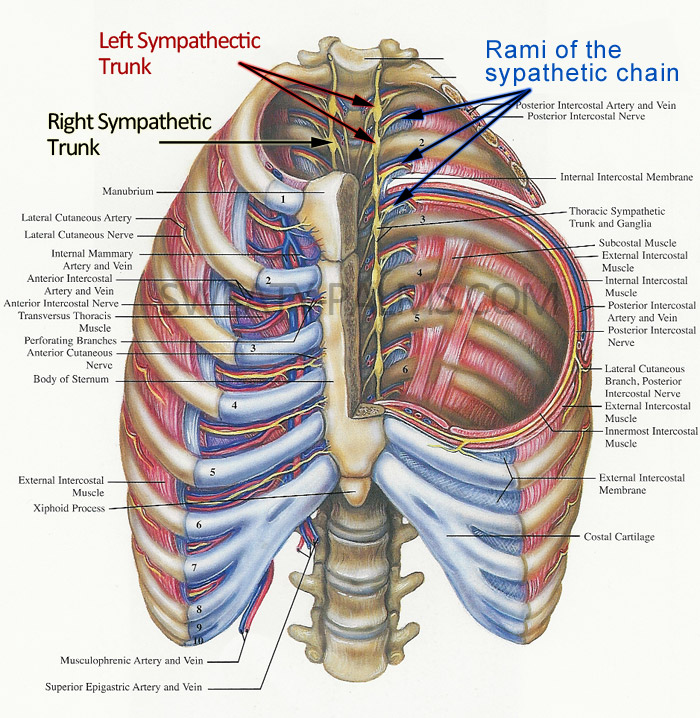What is the difference between “truncal sympathectomy” vs. “ramicotomy” for hyperhidrosis?
Over the last so many years there questions about the right operation for Palmar hyperhidrosis came time and time again. Obviously the older and the very aggressive surgical methods (trans cervical approach, dorsal approach from the back, transthoracic approach) to perform sympathectomy were replaced by the endoscopic approach (ETS).
The second improvement that was implemented over the years was the move from performing ETS at the second level (T2) to lower levels (T3, T4, T5). Basically lowering the level of the sympathectomy lowered down the number of cases with severe compensatory sweating. It did not eliminate it completely but statistically the numbers are better. The third improvement that happened that came about was doing the sympathectomy with titanium clamps vs. destruction of the sympathetic chain trunk.
Another surgical possibility that was tried was to divide the rami (nerve branches) that go towards the hands and the armpits. The reason for doing so was the idea that it would produce less severe compensatory sweating cases. In a small amount of studies with a limited amount of patients and limited follow-up it showed that there was reduction in the amount of cases with severe compensatory sweating. On the other hand more long term studies showed higher recurrence rates. So it’s a matter of choosing between possibly less severe compensatory sweating and higher possibility of recurrence.
Dr. Reisfeld feels optimistic about what Ramicotomy may have to offer as a less aggressive surgical approach. The decision about doing Ramicotomy is something that would need to be determined on a case by case basis after careful discussion between the surgeon and patient.

